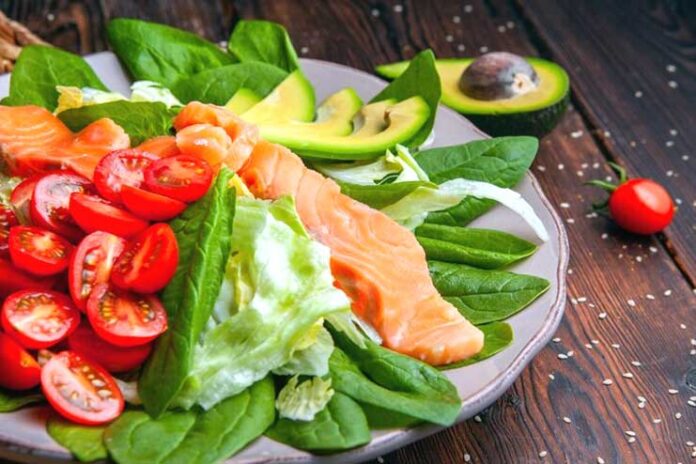Affiliate Disclaimer
Some links in this article are affiliate links. We may earn a small commission if you make a purchase through these links, at no extra cost to you. We only recommend products we find useful to our readersIt is necessary to consider the role of omega-3 fatty acids in maintaining optimal heart health. These vital nutrients are the foundation of a heart-healthy diet since they have been thoroughly studied and connected to numerous cardiovascular advantages. Including salmon in your meals is a tasty and simple way to expand your culinary palette to include omega-3s. Salmon, one of the best suppliers of these fatty acids, enhances flavor and improves cardiovascular health in general.
The two main goals of this post are to highlight the importance of omega-3 fatty acids in heart health promotion and to offer a delicious way to include them in your diet. We aim to provide an enticing salmon salad recipe to satisfy your palate and your heart’s nutritional demands. We aim to equip readers with the information and resources they need to make heart-healthy decisions without sacrificing flavor.
Benefits of Omega-3s for Heart Health
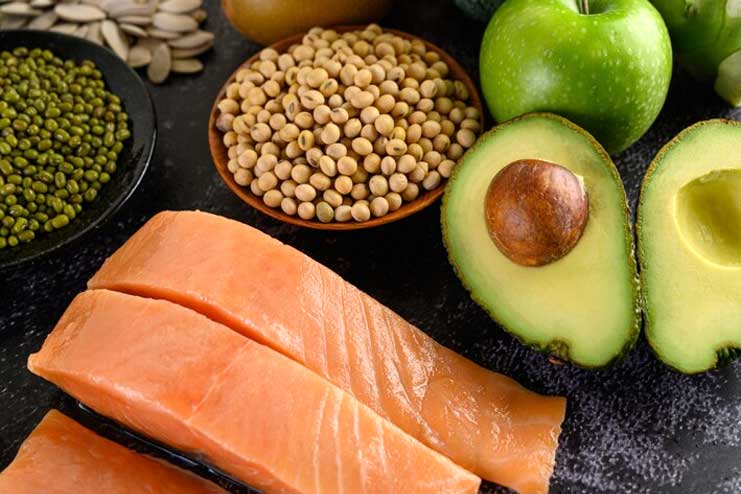
Omega-3 fatty acids are unsung heroes in heart health because they are essential for bolstering cardiovascular health. These vital lipids, primarily present in fatty fish like salmon, have several advantages that support the heart’s general toughness.
One kind of polyunsaturated fat is omega-3 fatty acids. These lipids are necessary for brain cell development and other vital processes. Omega-3 fatty acids support heart health and stroke prevention. If you already have heart disease, they also aid in improving the health of your heart.

Our body does not produce omega-3 fatty acids on its own. They must come from your diet. Certain types of fish have omega-3 fatty acids. They are also present in several plant-based foods. You should consume 5% to 10% of your calories as omega-3 fatty acids.
- One of omega-3 fatty acids’ main benefits is their capacity to lower inflammation throughout the body. Because chronic inflammation is known to precede several cardiovascular problems, omega-3 fatty acids function as organic anti-inflammatory drugs, reducing the risk. Furthermore, these fats have been linked to improved cholesterol, specifically by elevating high-density lipoprotein, or “good” cholesterol, and reducing triglyceride levels.
- Most significantly, omega-3s have proven to be effective in reducing the risk of cardiovascular illnesses. Several studies have demonstrated a link between a lower prevalence of heart-related diseases and a higher consumption of foods enriched in omega-3 fatty acids. Their function as heart guardians is further enhanced by supporting healthy blood vessel activity and maintaining ideal blood pressure.
- Including foods high in omega-3s in a balanced diet is a proactive approach to cardiovascular health. Fish is known to be high in omega-3 fatty acids, and is a delicious remedy. Baked, grilled, or mixed into a nutrient-dense salad, salmon is a tasty and adaptable way to increase your intake of omega-3 fatty acids.
Nutritional Value of Salmon
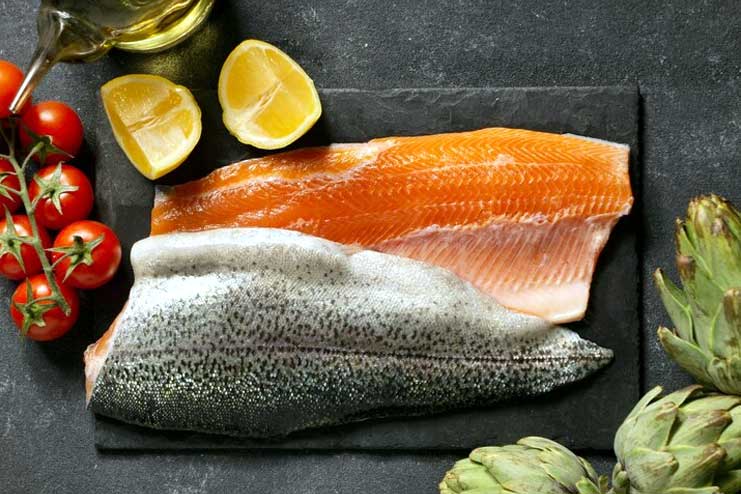
Beyond its delicious flavor, salmon has a profile that makes it an excellent nutritious choice. Rich in vital minerals, this fish fosters general health and wellness.
Salmon raised in aquaculture is an excellent source of protein, omega-3, good fats, and several essential vitamins and minerals. The average 3.5 oz (100 g) piece of farmed salmon provides at least 20% of the daily required intake of vitamins B3, B5, B6, B12, vitamin D, vitamin E, and selenium, and 41% of the daily recommended amount of protein. Additionally, potassium, a nutrient of significance to public health, is abundant.
- The essential component of salmon’s nutritional appeal is its high amount of omega-3 fatty acids. These polyunsaturated fats, particularly docosahexaenoic acid (DHA) and eicosapentaenoic acid (EPA), significantly influence cardiovascular health. They boost brain function and help maintain optimal cognitive health, as well as lower inflammation and the risk of heart disease.
- Apart from its abundance of omega-3 fatty acids, salmon is an excellent premium protein source. Protein is a building block for the immunological response, muscle repair, and the production of vital hormones and enzymes. Because of its high protein content, salmon is a great food option for anyone trying to keep or gain lean muscle mass.
- Salmon contains a wide range of vitamins and minerals. It is a noteworthy source of B vitamins essential for neurological health and energy metabolism, including niacin and B12. Selenium, another potent antioxidant found in salmon, is crucial in shielding cells from oxidative damage.
Salmon’s combination of these elements promotes general health and well-being. Salmon is a nutritional ally in the quest for a well-balanced and nourished existence, providing a range of vital vitamins and minerals, supporting cardiovascular function, and assisting in muscle preservation. Beyond its culinary variety, salmon’s nutritional richness makes it a beneficial complement to a health-conscious diet, whether baked, grilled, or used in salads.
Recipe Ingredients and Preparation
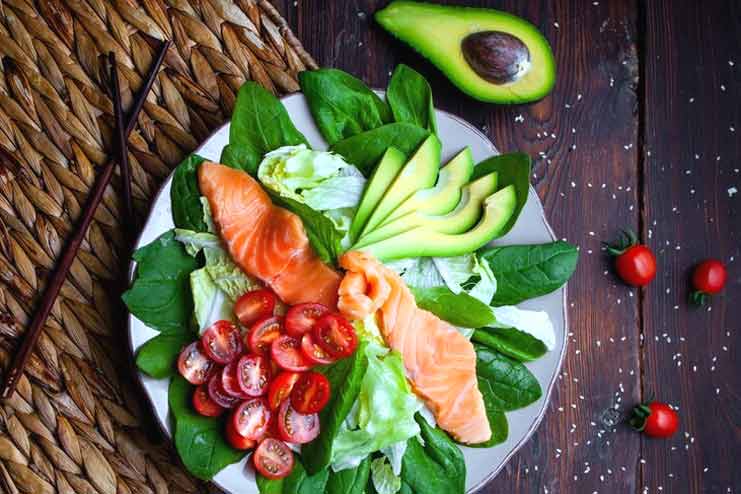
Set out on a gastronomic quest for a heart-healthy delight, this recipe for salmon salad delivers an abundance of vital nutrients along with a symphony of flavors. It is your how-to guide for making this delicious dish that combines heart-healthy goodness with flavor.
Ingredients:
- Two filets of salmon, about six ounces each, either fresh or frozen.
- A hearty handful of mixed greens makes a colorful salad foundation.
- Half a cup of cherry tomatoes for delicious bursts.
- One cucumber, thinly sliced to provide a crisp, excellent taste.
- Diced avocado: 1 for healthy fats and smoothness.
- 1/4 cup red onion, thinly chopped for a little bite.
- One bell pepper, thinly cut for color and nutrition (choice of color).
- Two teaspoons of fresh dill, chopped for a herbaceous pop.
Regarding the Marinade for Salmon:
- Two teaspoons of olive oil will provide an excellent fat foundation.
- For a zesty boost, use two teaspoons of lemon juice.
- Two minced garlic cloves for savory depth.
- One teaspoon of Dijon mustard will give it a tangy kick.
- Season with salt and pepper to taste.
Options for Heart-Healthy Dressing:
- Balsamic Vinegar and Olive Oil: A traditional pairing for a tasty, light dressing is olive oil and balsamic vinegar.
- Lemon and Greek Yogurt: A creamy treat with a zesty twist that’s healthy.
- Avocado Lime Dressing: For a creamy, heart-healthy option, blend avocado, lime juice, Greek yogurt, and a small amount of honey.
Getting ready:
- Prepare the salmon by marinating it.
- Combine the olive oil, lemon juice, Dijon mustard, add minced garlic, salt, and pepper in a bowl.
- After applying the marinade evenly to the salmon filets, let them sit for at least 15 minutes.
- Bake or Grill the Salmon? Grill the salmon on each side for 3–4 minutes over medium-high heat or bake it for 12–15 minutes at 400°F (200°C) in a preheated oven or until a fork can easily pierce it.
Get the salad base ready:
Combine the mixed greens, cherry tomatoes, bell pepper, cucumber, avocado, red onion, and fresh dill in a big bowl.
Put the Salad Together:
Bite-sized baked or grilled salmon pieces should be carefully arranged over the salad.
Select Your Dressing for Heart Health:
Choose your favorite dressing to drizzle over the salad: creamy Greek yogurt with lemon, rich avocado-lime combination, or traditional olive oil and balsamic.
Toss and Present:
Toss the salad gently to mix everything and evenly distribute the flavors.
Serve immediately and enjoy the harmony of heart-healthy ingredients that combine to create a delicious and nutritious sensory feast: salmon salad.
This heart-healthy salmon salad is a veritable feast for the senses, providing the body with many nutrients vital to cardiovascular health. Savor the healthy goodness of this dish as you celebrate the union of delicious food and excellent health on your plate.
Tips for Serving and Variation
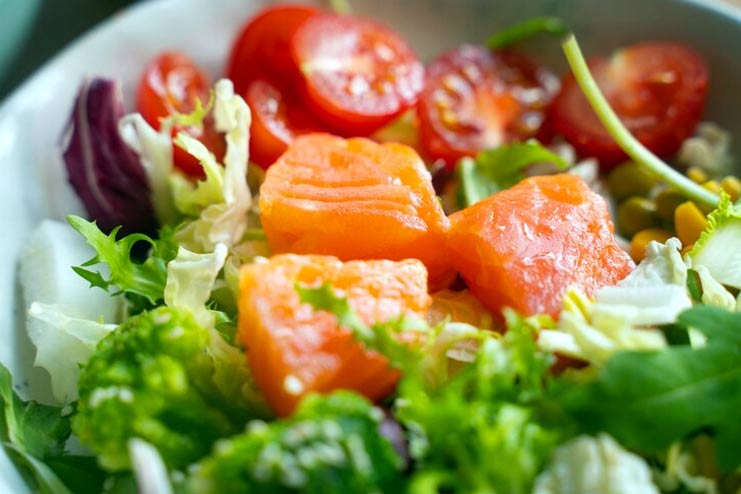
Enjoy salmon salad to a new level with these inventive serving suggestions and modifications that suit various palates and dietary requirements. This recipe for heart health is so flexible that you can customize it to your preferences.
Serving Ideas:
- Heated or Cold: For a hearty dinner, serve the salmon heated straight from the grill or oven. Alternatively, chill the salmon in advance for an excellent salad.
- Individual Portions: Prepare individual servings for a visually stunning presentation ideal for get-togethers or special occasions.
- Crunchy Toppings: For a crunch and nutritious boost, sprinkle toasted nuts or seeds, such as almonds or sunflower seeds.
Presentation Hints:
- Layered Beauty: Arrange the ingredients in layers to create a visually arresting presentation highlighting the salad’s vivid colors and textures.
- Avocado Roses: To add a sophisticated touch, cut the avocado into thin strips and fan them out to create beautiful avocado roses.
Changes and Replacement of Ingredients:
- Quinoa Boost: To make the salad into a filling dinner, incorporate cooked quinoa as a substantial grain component.
- Vegan Delight: For a vegan-friendly take on salmon, try substituting marinated and grilled tofu or tempeh.
- Cheese Love: Toss in some goat or feta cheese for a creamy, zesty touch that accentuates the salmon’s flavor profile.
- Citrus Zest: Add a little orange or lime zest to the marinade for a zesty kick.
Dietary Adjustments:
- Gluten-Free Option: For a gluten-free option, skip the croutons altogether or substitute them with gluten-free ones.
- Low-Carb Variation: For a low-carb variation, omit the croutons and substitute more vegetables or nuts.
- Dairy-Free Delight: To avoid losing flavor, use a dairy-free dressing or eliminate the cheese.
This recipe for salmon salad is so flexible that it may be adjusted to suit different palates, dietary requirements, and events. Try these serving suggestions and adjustments to establish this heart-healthy dish as a mainstay in your kitchen, showcasing taste and health on your plate.
Health Benefits Recap
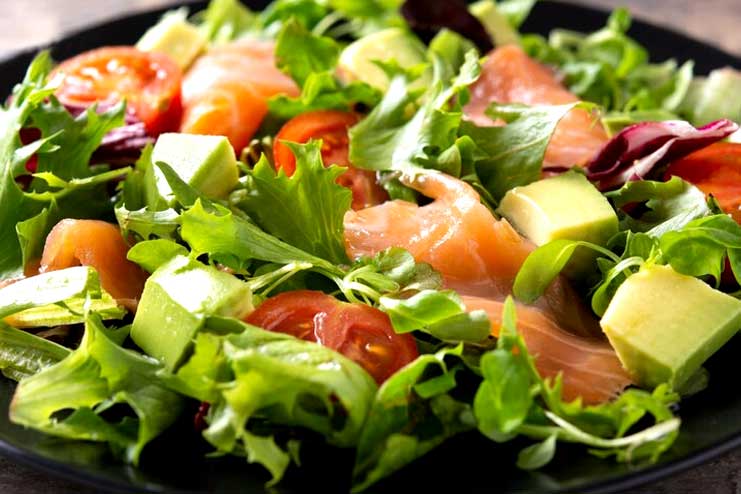
With its heart-healthy flavors and nutritional advantages, our heart-healthy salmon salad is a culinary tribute to well-being. Salmon is a rich source of omega-3 fatty acids, which protect heart health by lowering inflammation and the risk of cardiovascular disease. Rich in protein, vitamins, and minerals, this dish not only pleases the taste buds but also strengthens the body.
Enjoy knowing that every mouth-watering taste feeds your heart as you savor each bite. We urge you to adopt comparable heart-healthy dishes and include them in your cooking arsenal to develop long-lasting routines that prioritize cardiovascular health.
You set out on a path to better heart health with every deliberate decision you make, relishing the union of flavor and wellness on your plate. Let’s toast to living from the heart and the happiness it bestows upon our body and spirit!
Conclusion
In conclusion, there is no denying the heart-healthy advantages of including foods high in omega-3s, like salmon, in your diet. Making this easy but delicious salmon salad a regular part of your diet is a proactive way to care for your heart. We warmly encourage you to partake in this gastronomic journey, make the recipe, and report back on your findings.
Let the feast commence, and may every morsel symbolize the joy of living with awareness of one’s heart. Savour the tastes, put your health first and spread the goodness to others in the kitchen as you begin your path to better heart health.
Related Articles:
- Top 85 Nutrition Quotes that Motivates You to Eat Healthy
- 15 Weird Combos that are Bad and Wacky as They Sound
- A Saviours Guide to Fatty Liver Diet
Reference
https://medlineplus.gov/ency/patientinstructions/000767.htm#:~:text=Omega%2D3s%20and%20Your%20Heart&text=They%20reduce%20triglycerides%2C%20a%20type,hardens%20and%20blocks%20your%20arteries.
https://pubmed.ncbi.nlm.nih.gov/25720716/#:~:text=Omega%2D3%20fatty%20acids%20have,to%20treat%20hyperlipidemia%20and%20hypertension.
https://www.healthline.com/nutrition/salmon-nutrition-and-health-benefits#1
https://globalsalmoninitiative.org/en/about-salmon-farming/nutrition/#:~:text=(100%20g)%20portion%20of%20farmed,concern%20in%20the%20United%20States.
https://dishingouthealth.com/salmon-superfood-salad/
https://healthecooks.com/recipe/heart-healthy-salmon-salad
https://www.thekitchn.com/side-dishes-for-salmon-266875
https://www.healthline.com/nutrition/how-to-cook-salmon#:~:text=However%2C%20some%20people%20may%20prefer,over%20steamed%20salmon%20en%20papillote.&text=Some%20of%20the%20healthiest%20methods,and%20baking%20in%20parchment%20paper.
https://www.mayoclinic.org/diseases-conditions/heart-disease/in-depth/omega-3/art-20045614
https://www.webmd.com/healthy-aging/omega-3-fatty-acids-fact-sheet
In this Article














